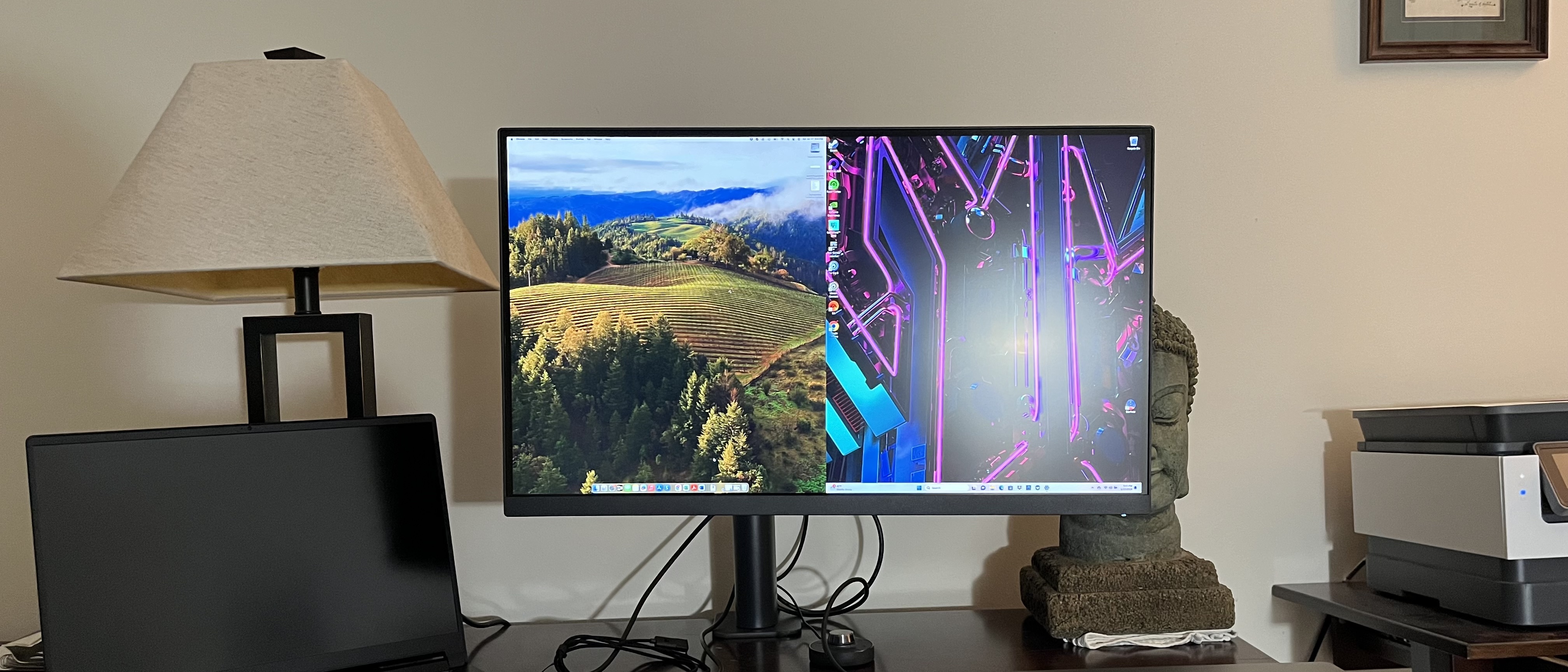TechRadar Verdict
The BenQ PD2705UA presents a few shortcomings – such as a low-rated HDR, unimpressive speakers, and one less upstream cable than I'd have liked – but overall, it's a fantastic monitor. Fantastic image quality means it can easily handle the needs of most photographers and photo editors, while its ergonomic arm saves on desk space and makes adjusting the screen incredibly easy.
Pros
- +
Fantastic, sharp image quality
- +
Robust ergonomics
- +
Plenty of ports, including USB–C and USB hub
Cons
- -
Just HDR10
- -
Sound quality is just okay
- -
Only one upstream cable included
Why you can trust TechRadar
BenQ PD2705UA: Two-minute review
Unless you’re looking for a super-fast monitor for competitive gaming, there's very little to fault with the BenQ PD2705UA. It’s a fantastic display, whether for work tasks or those jobs that require greater accuracy such as photo and video editing.
While 27 inches may seem small when it comes to shopping for the best monitors, it will be the perfect size for those not wanting to be overwhelmed by their display. In fact, it has all the makings of the best 4K monitors for most people, with any issues I’ve had with the BenQ PD2705UA pretty minimal.
For instance, the sound quality isn’t anything to shout about; but then I've yet to come across a monitor that has really delivered in that realm. Plus, you can always use a set of speakers.
When it comes to what makes this monitor special, I have to start with its ergonomics, specifically the PD Ergo Arm. Instead of the usual stand, it clamps onto the lip of the desk for incredible stability. From there, you can swivel the monitor to either side by a massive 275 degrees. Its tilt is a bit more modest at five degrees down and 30 up, although I don’t find it to be too bothersome. More interestingly, it’s very easy to pivot the screen 90 degrees into portrait mode – perfect for coders.
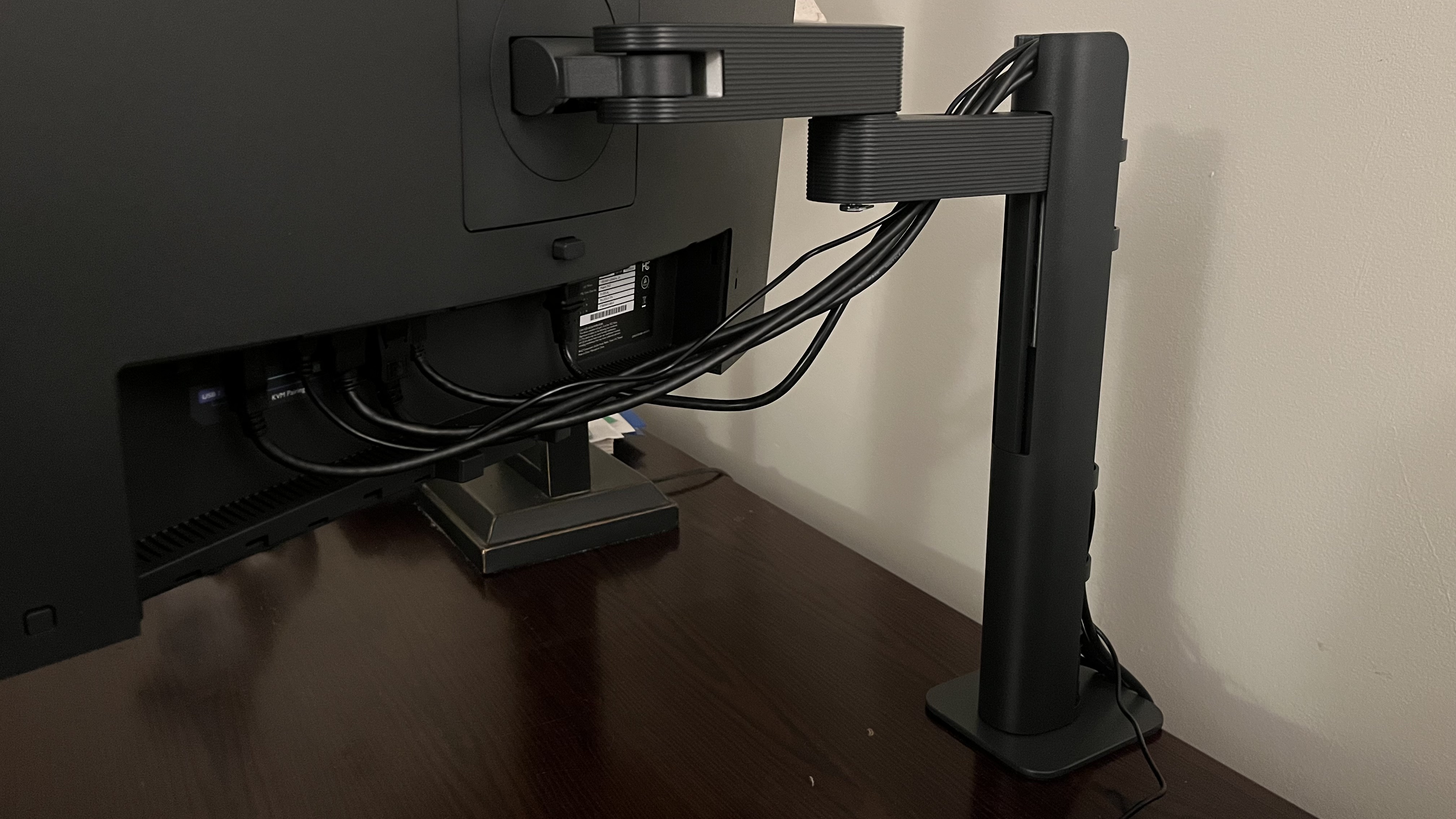
Also worth mentioning about the Ergo Arm is the fact that cable management is built right into it for a very clean-looking setup.
Port selection impresses, too, with HDMI, DisplayPort and USB-C options. The latter is particularly welcome; I no longer need a dongle to plug in a MacBook, plus it comes with charging to keep that MacBook juiced up during use.
There’s also a USB-hub with KVM capabilities, so you can use the same keyboard and mouse no matter the source – and while this isn't a new feature, it’s implemented well here. Again, that USB-C shines insofar that you don’t need an upstream cable connected to that computer to use the KVM feature. Unfortunately, there’s only one upstream cable included, despite the inclusion of two ports. As such, if you want to use the KVM feature between an HDMI and DisplayPort source, you’ll have to invest in an extra cable.
As far as controls are concerned, they’re situated on the monitor's back-right corner and consist of three buttons and a joystick. Using them to navigate the OSD menu is about as straightforward and intuitive as it gets. However, BenQ also includes a hotkey puck with a dial for some easy manipulation, which can be customized in the OSD menu.
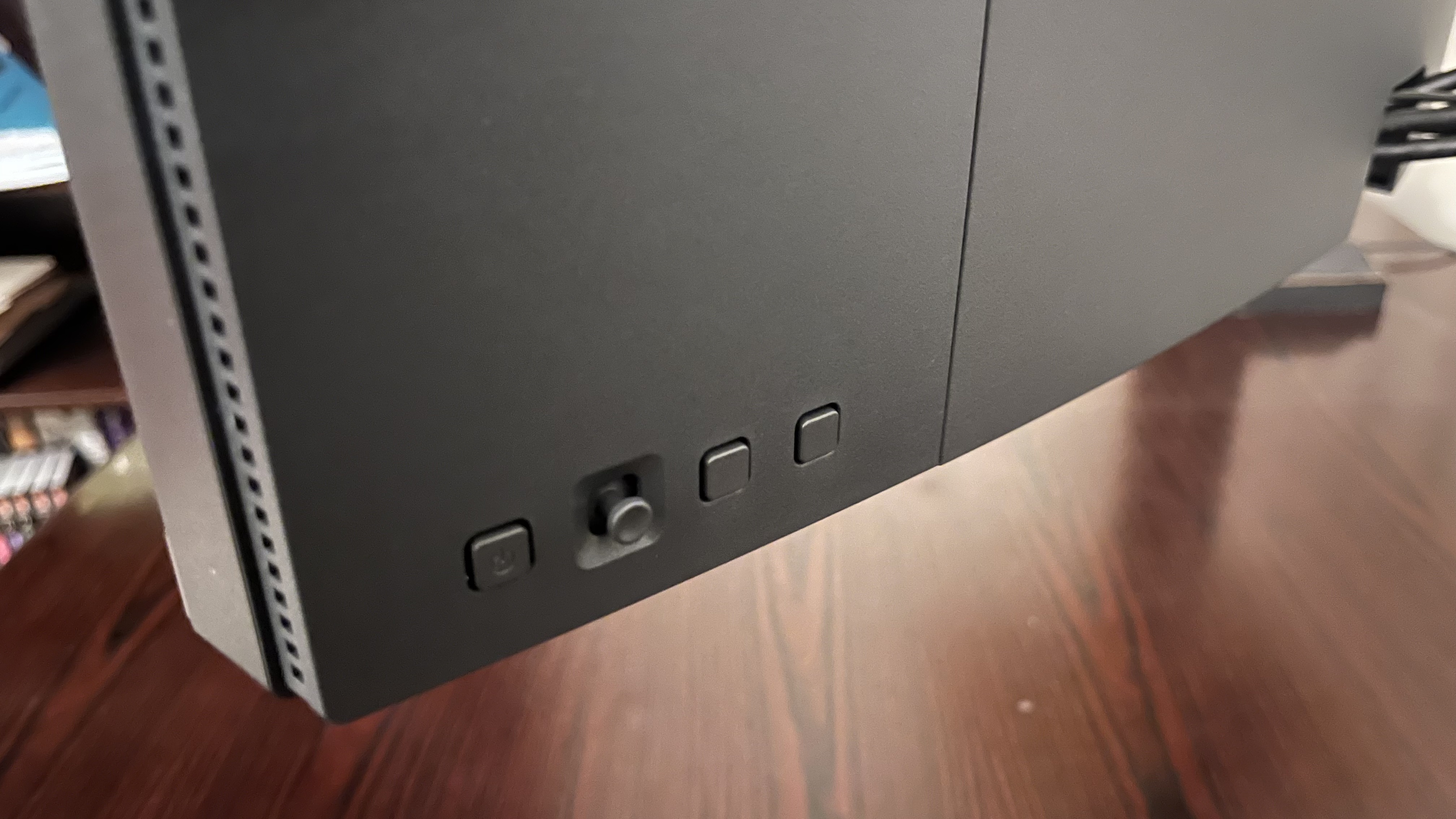
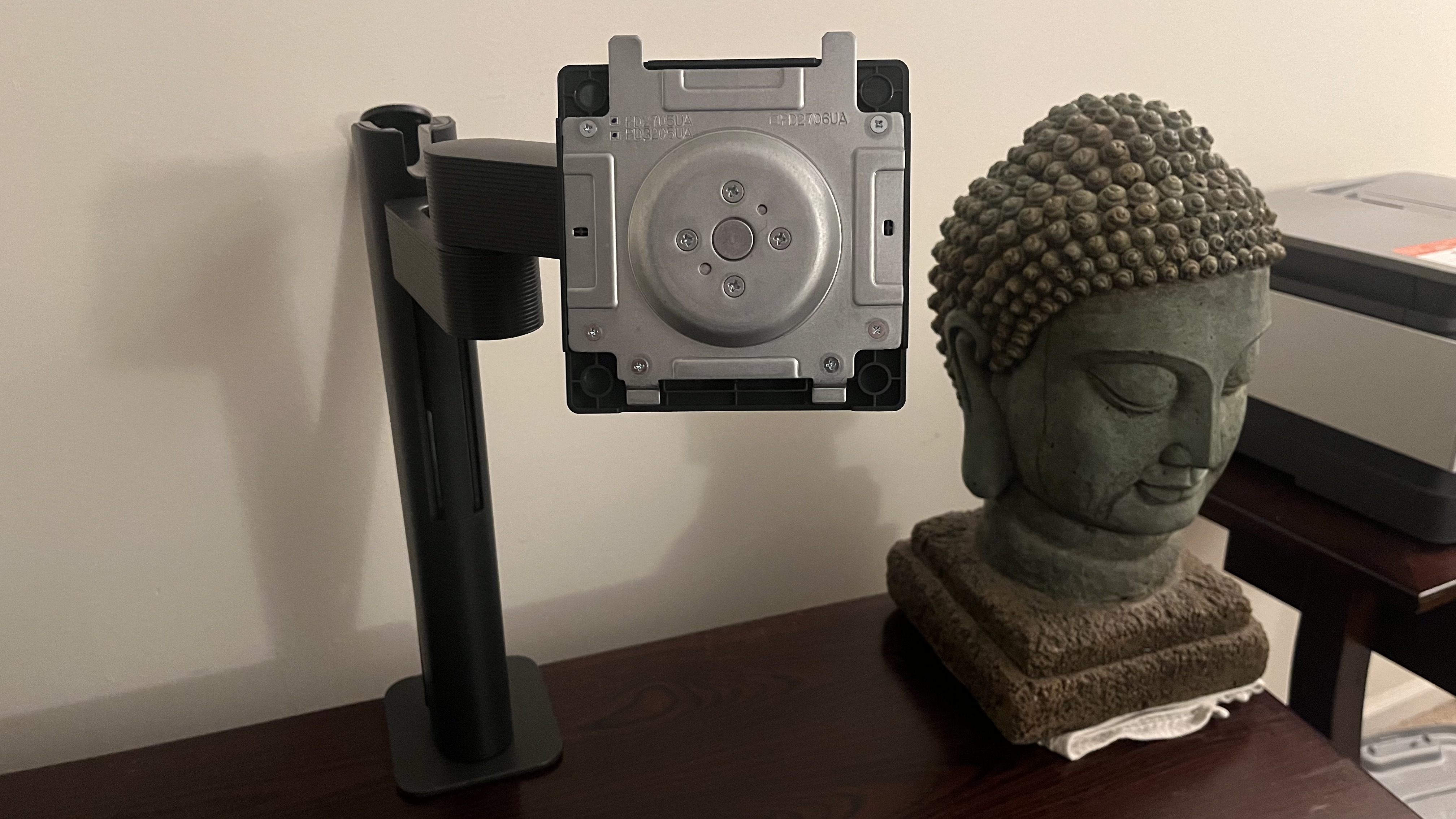
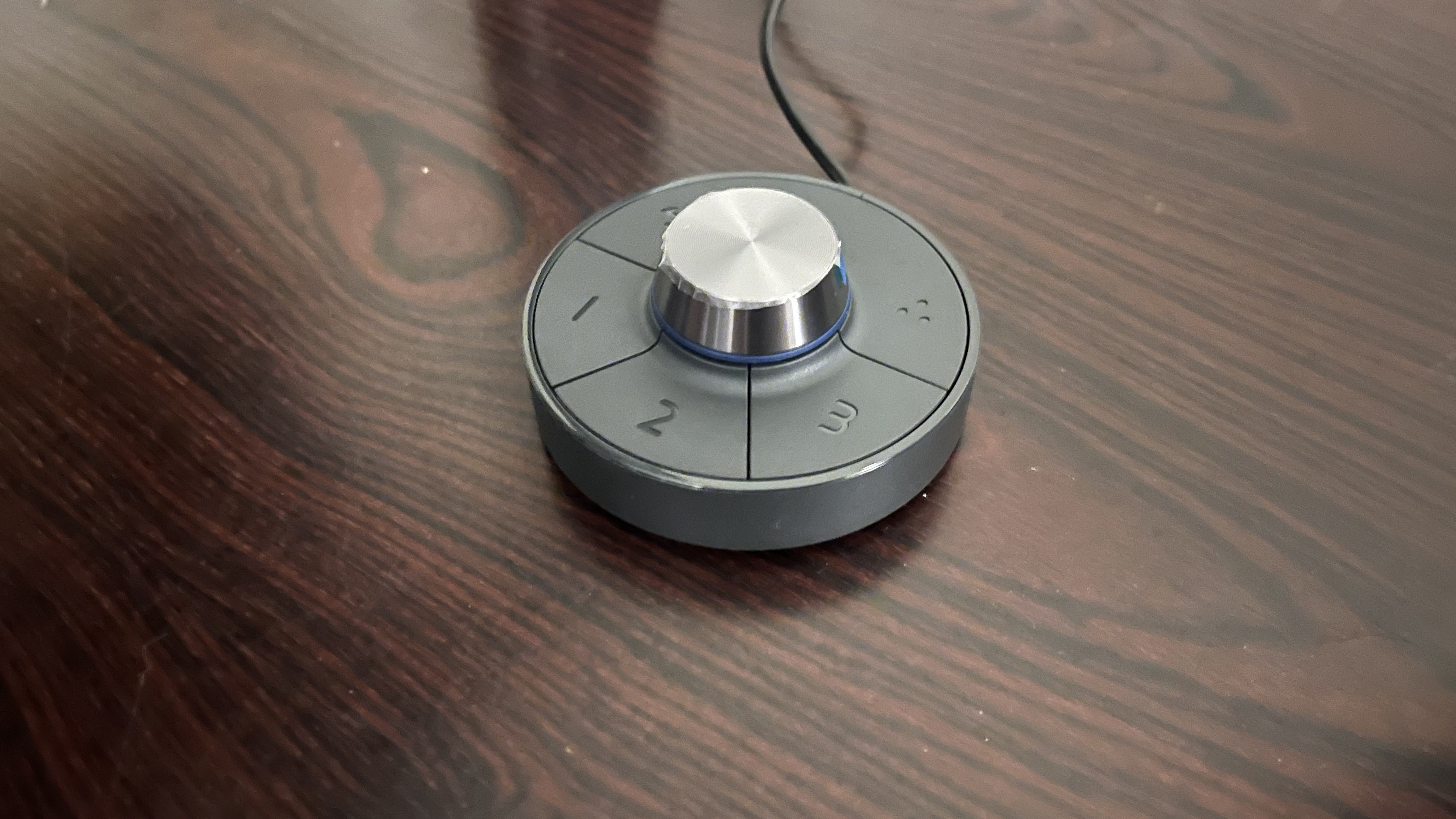
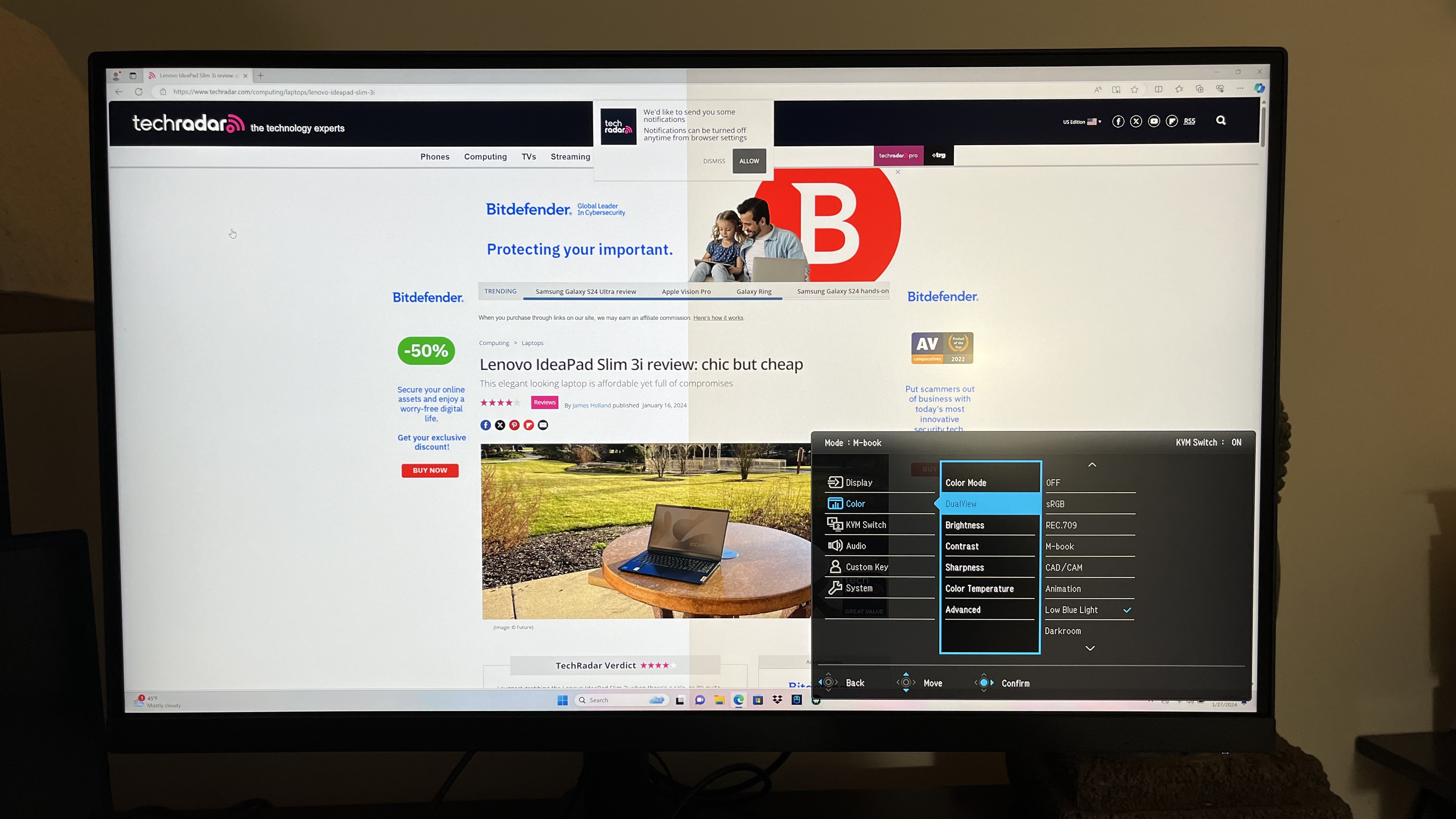
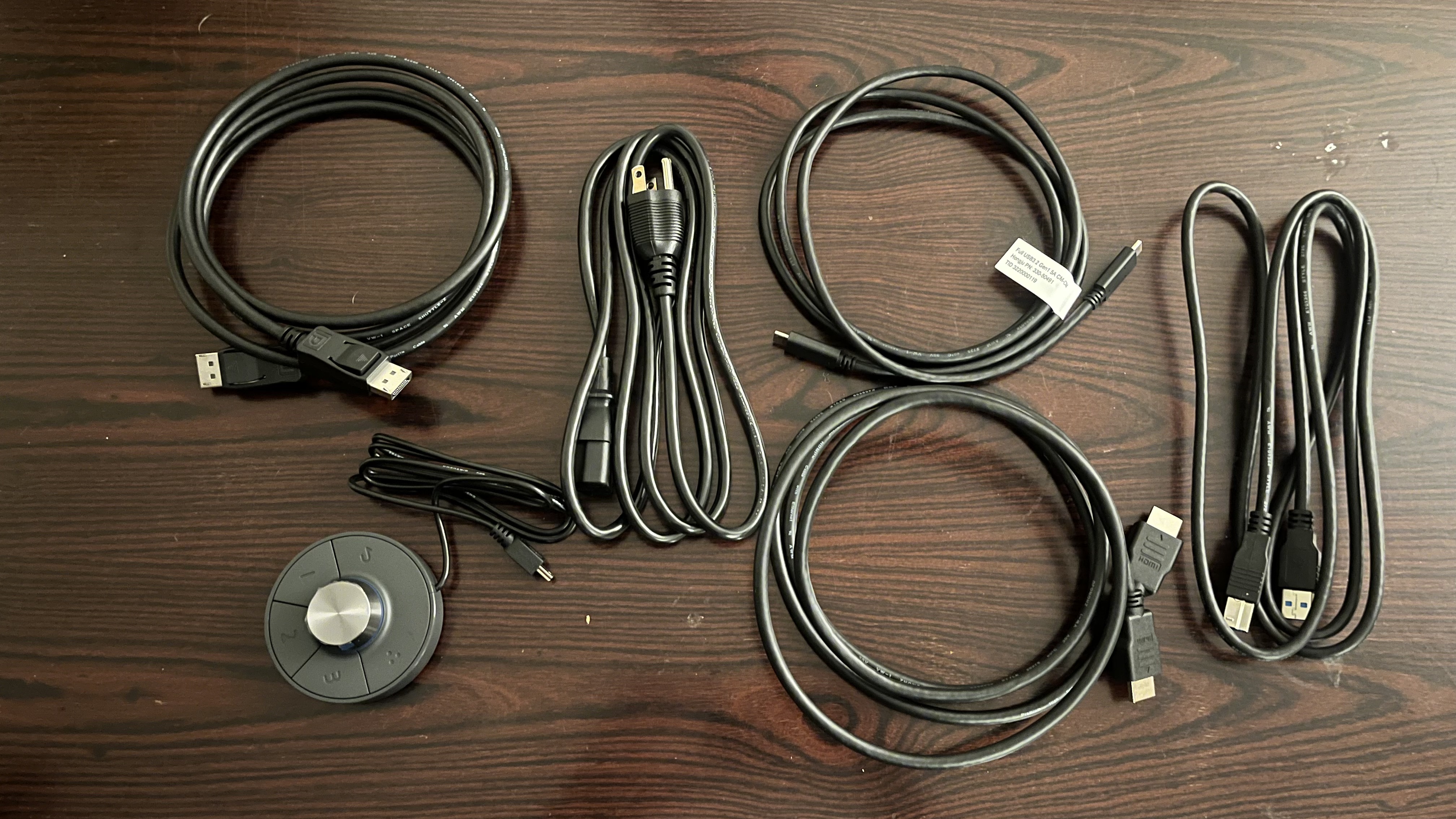
The display itself is a 27-inch IPS panel with a 4K resolution at 60Hz. Unless you want total immersion, which I think is more important for gaming over anything else, it’s actually the perfect size. And, with 99% Rec.709, 99% sRGB color coverage, it’s vibrant enough for any media and can handle any color work you need to complete.
While it’s plenty bright at 250 nits, its 350 nits peak in HDR is only adequate. It’s nice to have, but I do wish HDR was a bit better. However, considering this is a sub-$600 monitor with so much going on, I’m not surprised.
There are some additional features that really add to the experience, though, with two that photo editors in particular will appreciate. First, there are a number of color modes (specifically: Animation, CAD/CAM, Darkroom, DICOM, HDR, Low Blue Light, M-Book, Rec.709, sRGB, User) for different situations, so you can adjust the color coverage and temperature for your work or for matching your laptop’s screen – the M-Book to match an Apple laptop’s XDR display, for instance.
The second is an extension of those color modes. Specifically, you can split the screen between any two color modes so that you can see what your work will look like on different screens.
Additionally, Picture-In-Picture and Picture-By-Picture are available with the BenQ PD2705UA. My only issue with either is the fact that it takes a bit of work to adjust each source’s resolution manually to fill the screen, although that’s probably more of an issue with Windows than with the monitor.
As mentioned before, the BenQ PD2705UA comes with two 2.5W speakers. It isn't particularly loud, there’s little bass, and it can sound a little boxy. However, it will do in a pinch, if need be. That said, I'd recommend using the monitor with a set of external speakers, especially for any audio work when working on video.
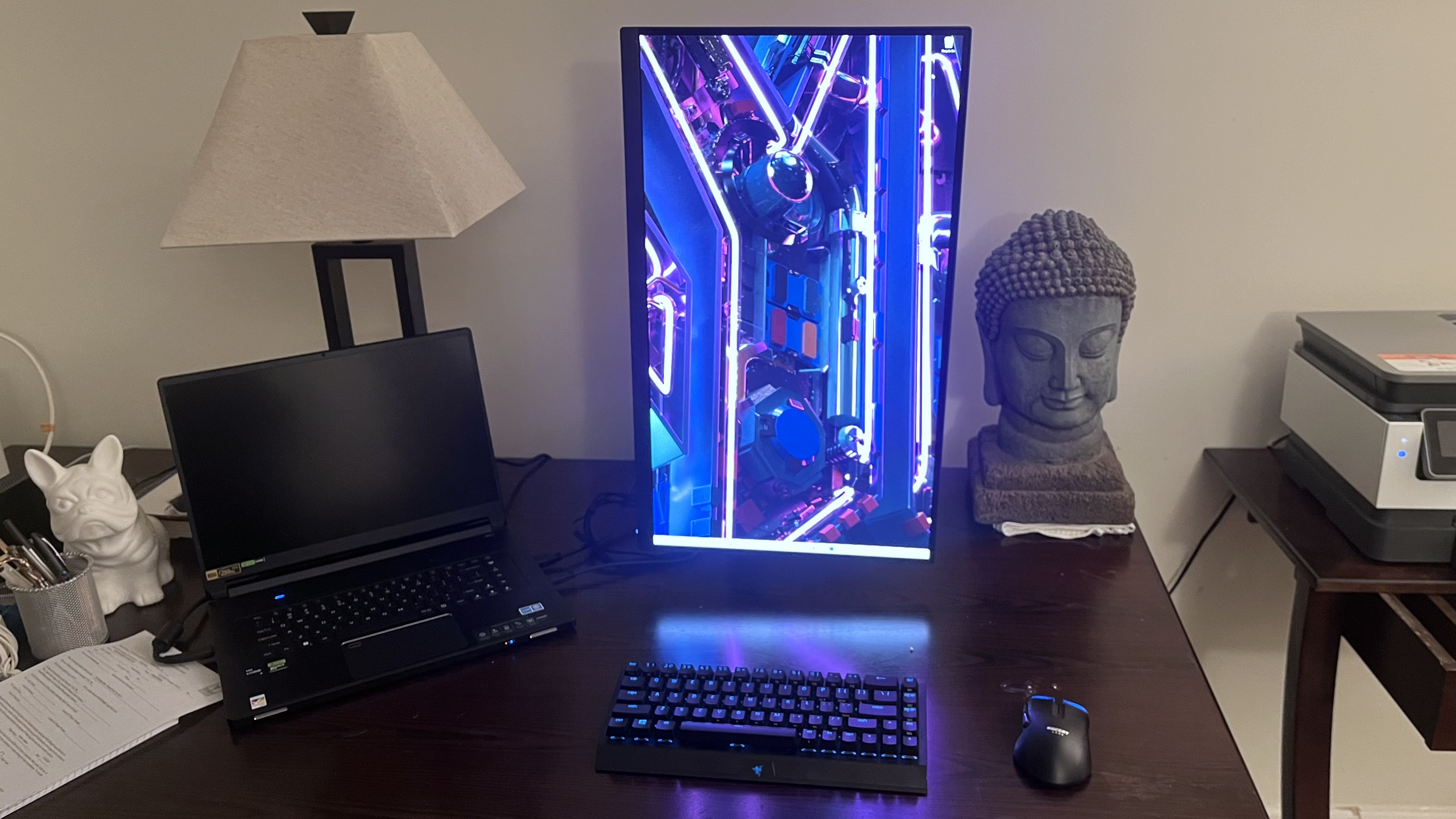
BenQ PD2705UA: Price & availability
- How much does it cost? $549.99 / £549.99 / AU$739
- When is it available? Available now
- Where can you get it? Available in the US, UK and Australia
A price tag of $549.99 / £549.99 / AU$739 could be considered pricey; but if you consider all that the BenQ PPD2705UA has to offer, it’s more than reasonable. Especially if you have an awkward setup and are in need of its ergonomics or want good color coverage.
Consider, for instance, the LG 32UN880, which has been around for a few years already. It’s still priced higher, even though we reviewed it back in 2020. At the time, it went for $699 (£599, AU$1,203) and now seems to hover closer to $630. Of course, it's bigger at 32 inches and has a similarly useful ergonomic arm, not to mention top-notch color coverage (or 4K resolution). However, the cable management and range of KVM implementation on the BenQ PD2705UA is better.
This BenQ model is just a bit cheaper than the BenQ PD2706UA I reviewed last year priced at $629.99 (about £503.60, AU$932.65). And, as far as I can tell, the PD2706UA is just a bit brighter with a focus on its DCI-P3 color coverage.
- Price: 4 / 5
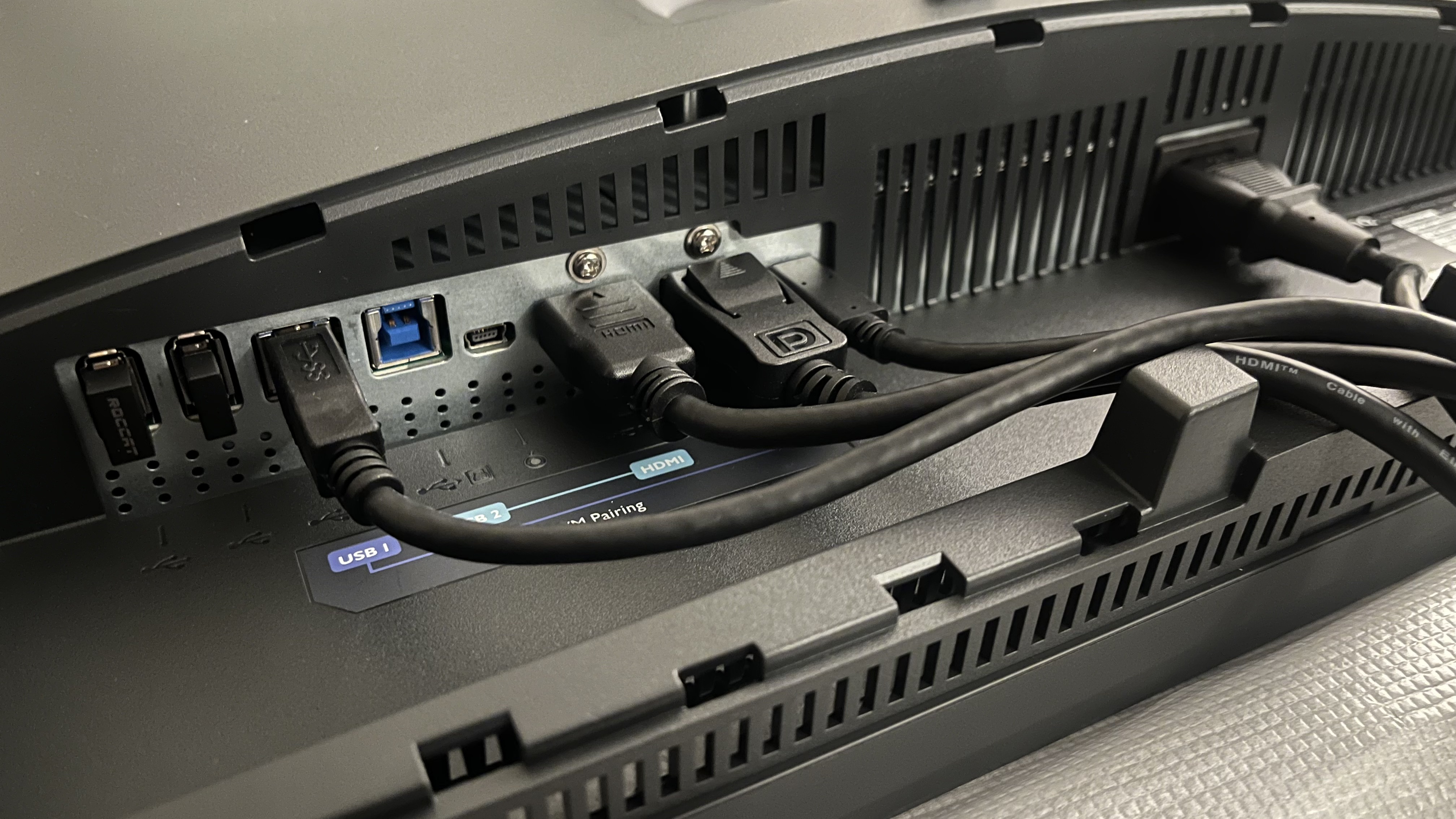
BenQ PD2705UA: Specs
| Screen size | 27 inches |
| Aspect ratio | 16:9 |
| Resolution | 3840x2160 |
| Brightness | 250 nits (typ), 350 nits (HDR) |
| Refresh rate | 60Hz |
| Response time | 5ms gtg |
| Viewing angle | 178/178 |
| Contrast ratio | 1,200:1 |
| Color support | 99% Rec.709, 99% sRGB |
| Inputs: | 2x DP 1.4, 1x HDMI 2.0, 1x USB-C (656W power delivery) 2x USB-B upstream, 1x USB-C downstream, 3x USB 3.2 downstream |
| Weight | 10 lbs (22 kg) |
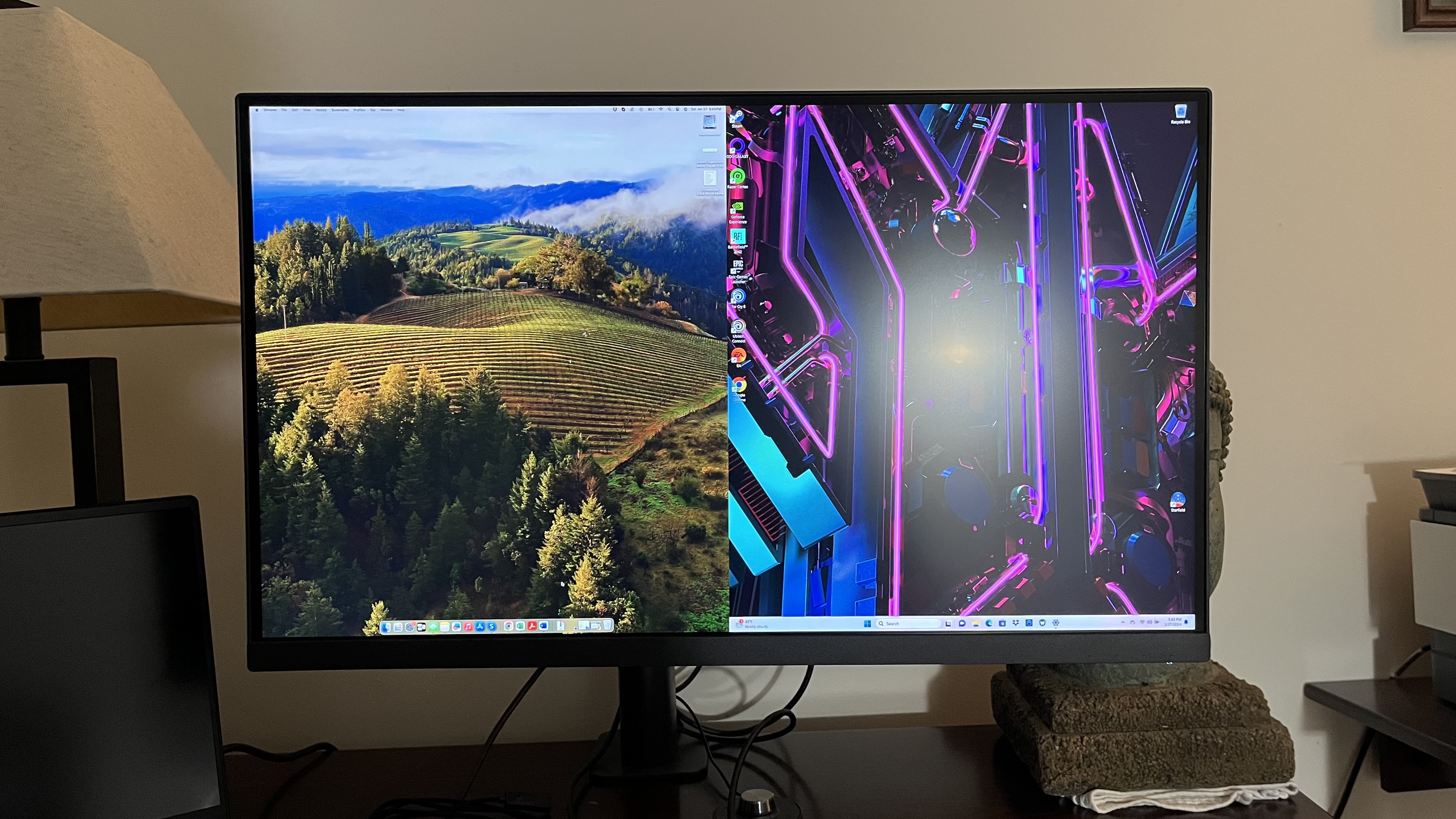
Should you buy the BenQ PD2705UA?
| Value | The price is not great, but it’s not bad considering what you can get. It’s a good example of you get what you pay for. | 4 / 5 |
| Design | This display can be turned just about every which way and comes with all the ports you could need. | 4.5 / 5 |
| Performance | It looks great with great color coverage and a fantastic set of features. It’s only slightly let down by the speakers and minimal HDR. | 4.5 / 5 |
| Average rating | The BenQ PD2705UA is a fantastic monitor for productivity or photo editing work. Even its biggest flaws aren’t that big of a deal. | 4.5 / 5 |
Buy the BenQ PD2705UA if...
You need a great screen for photo editing
With 99% sRGB and Rec.709 color coverage, not to mention that sharp 4K resolution, accuracy of photo editing work won't be an issue with this monitor.
You care about ergonomics
The Ergo Arm stands above typical stands in more than just a literal way. It can turn in all sorts of directions, making it perfect for those who have an awkward setup or want to put their monitor in portrait mode.
You need productivity features for two sources
KVM, PiP, and PBP all elevate this monitor’s productivity and enable a smoother and quicker workflow when switching between two sources.
Don't buy it if...
You want a high refresh rate
If you’re looking for a high-refresh-rate monitor, this isn't for you. It’s capped at 60Hz and is meant for creatives and worker bees, not competitive gamers.
You’re on a budget
While the price is good for those who need such a monitor, technically it still can't be classed as cheap. Of course, for editing work, you’re better off saving up for a monitor such as this over opting for a cheap model.
BenQ PD2705UA: Also consider
If my BenQ PD2705UA review has you looking for other options, here are two more monitors to consider...
BenQ PD2706UA
It may seem like the same monitor, but the slightly more expensive BenQ PD2706UA also offers excellent P3 coverage (95% specifically), which makes it a better option for video editing work. It gets a bit brighter, too.
Read our full BenQ PD2706UA
LG 32UN880
Some people just need something a little bigger: enter the LG 32UN880. It might be a little long in the tooth, but it still offers a crisp 4K resolution, USB-C port, and an incredibly flexible ergonomic monitor arm. Just don’t expect KVM, PiP, PBP, or the dual color mode features.
Read our full LG 32UN880 review
How I tested the BenQ PD2705UA
- Used regularly for a week
- Tested with multiple sources
- Tried out all the features
I used the BenQ PD2705UA regularly for a week. While I did play some games on it (which went very well), it was mainly used as intended. I tried multiple sources and used the various features to see how well they worked, especially the KVM and various color modes. I also played around with the Ergo Arm to assess its limitations.
Having used this monitor, it’s clear that it’s meant for professionals and creatives, particularly photographers, who want a great monitor that doesn’t break the bank.
I’ve tested a lot of tech gear over the years, from laptops to keyboards and speakers, and so have been able to use my expertise to deliver an honest and fair opinion, not to mention a critical eye, to any product I test.
We pride ourselves on our independence and our rigorous review-testing process, offering up long-term attention to the products we review and making sure our reviews are updated and maintained - regardless of when a device was released, if you can still buy it, it's on our radar.
First reviewed March 2024
BenQ PD2705UA: Price & availability

James Holland loves checking out gadgets of all sorts, whether it's audio equipment, laptops, or vacuums (especially of the robot variety), and does so for a number of Future Publications including TechRadar, Top Ten Reviews, Homes & Gardens, and T3. He's built up an expertise for in-depth reviewing over the last four years. When he's not putting in the work on the latest tech, he loves to travel, play music, and eat questionable food.
